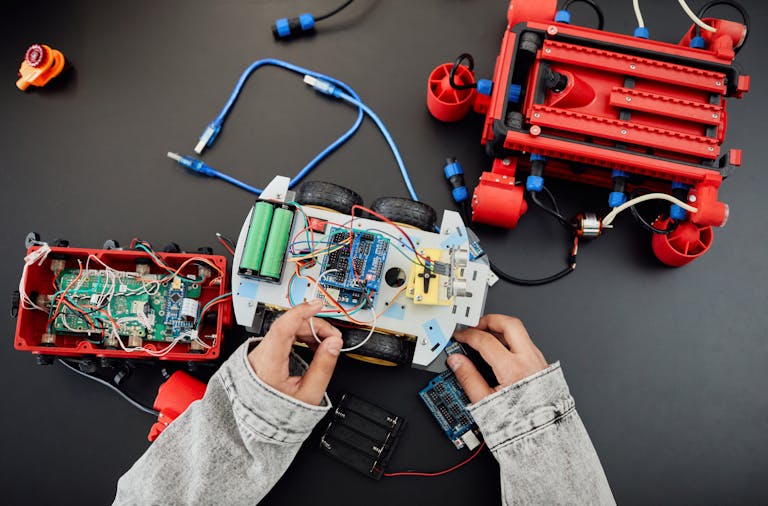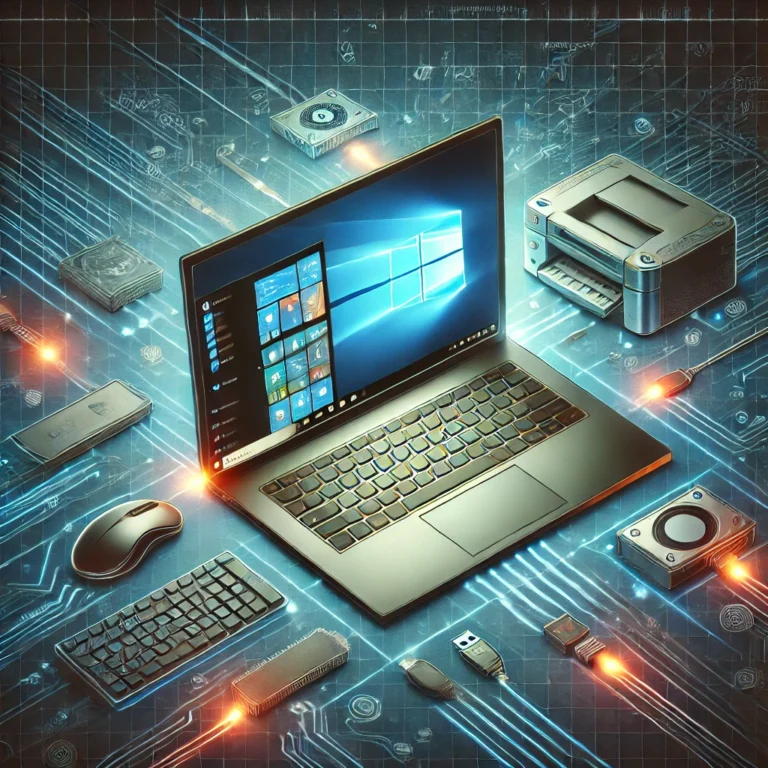Light pollution is a growing concern for many, affecting both urban and rural areas alike. For those looking to measure and understand the intensity of this issue, creating a light pollution meter using an LDR and an LCD display is a simple yet effective solution. This project not only highlights the impact of artificial light on the environment but also empowers users to take steps towards minimising its effects.
Using a Light Dependent Resistor (LDR) paired with an LCD screen, anyone can observe and record light levels easily. This combination allows for real-time monitoring and provides insights into how various sources of light contribute to pollution. With a straightforward design, even beginners can successfully assemble this device, making it accessible to a wide audience.
An LDR-based light pollution meter serves various purposes, from aiding astronomers in improving their observation conditions to helping individuals understand their local light environment. As awareness grows, this simple project stands out as an effective tool for education and advocacy.
Key Takeaways
- Light pollution has significant environmental impacts that can be measured effectively.
- A light pollution meter can be made easily with an LDR and an LCD display.
- This project provides valuable insights for both individuals and communities.
Understanding Light Pollution

Light pollution affects many aspects of life, including ecosystems and human health. It also involves the role of local authorities and legislation in managing the issue. Understanding these impacts is crucial for promoting sustainability and engaging the public.
Impact on Ecosystems and Human Health
Light pollution can disrupt natural ecosystems. Artificial lights interfere with the behaviours of wildlife, such as migration patterns and breeding cycles. For example, birds may be misled by bright lights, leading to fatal collisions.
Additionally, animals like sea turtles can be affected. Hatchlings rely on natural light cues to find their way to the ocean. Bright coastal lights can disorient them.
Human health is also impacted by light pollution. Excessive artificial lighting can lead to sleep disorders. Disruption of the body’s circadian rhythms can cause long-term health issues, including increased risks of depression and obesity.
Addressing light pollution will require effort in energy management and public participation. Local communities must work together to raise awareness of its effects.
Legislation and Role of Local Authorities
Local authorities play a vital role in combating light pollution through regulations and initiatives. Legislation, such as controlling outdoor lighting and promoting the use of shielded fixtures, is essential for managing environmental conditions.
Many local councils develop lighting plans to balance safety and the preservation of dark skies. These plans can include using energy-efficient lighting and dimming options during late hours.
Public participation is crucial. Residents can engage in discussions about light pollution and support community-led initiatives. By involving citizens, local authorities can create more effective and sustainable solutions to light pollution, leading to healthier and more enjoyable environments.
Design and Engineering of a Light Pollution Meter

Designing a light pollution meter involves selecting the right sensors and integrating communication modules for efficient data transmission. Attention to detail in engineering ensures the device operates effectively in various conditions.
Selecting Appropriate Sensors
Choosing the right sensors is crucial for accurate light pollution measurement. A Light Dependent Resistor (LDR) is a common choice due to its sensitivity to light levels. LDRs can detect a wide range of light, making them ideal for assessing ambient brightness in an area.
Integrating additional sensors can enhance functionality. For example, including temperature, humidity, and air quality sensors provides a more comprehensive environmental reading. Using I2C or SPI communication protocols facilitates data transfer between sensors and microcontrollers like the ESP32. Proper schematics and debugging techniques help ensure all sensors function harmoniously.
Integration of Communication Modules
Incorporating wireless communication modules is essential for remote monitoring. The ESP32 offers built-in Wi-Fi and Bluetooth, allowing the device to transmit data effortlessly over a network. This is particularly useful for citizen science projects, where data from various locations contributes to a broader understanding of light pollution.
When designing the communication system, consider network technologies that ensure reliable connectivity. The data transmission must be secure and easy to interpret. Using platforms like Keil or IAR can assist in developing firmware that manages sensor data and communication protocols efficiently. Effective integration enables users to monitor light pollution trends in real-time, promoting awareness and action against light pollution.
Applications and Advanced Features

Light pollution meters, such as those using LDR (Light Dependent Resistor) and LCD technology, have a range of applications that enhance our understanding of light pollution. They enable effective data collection, energy management, and security measures.
Data Analysis and Prediction
Light pollution meters can offer valuable insights by collecting real-time data on sky brightness. This data can be analysed using machine learning algorithms to identify patterns in light pollution over time. Such analysis can help predict peak pollution periods, allowing for targeted interventions.
Furthermore, the integration of artificial intelligence can enhance data interpretation, enabling users to understand the effects of urban development on light levels. Advanced metrics can utilise signal processing techniques that filter noise from measurements, ensuring accuracy.
Data from these devices can be stored securely in cloud-based systems, allowing for wide access and collaborative analysis. Such systems can store historical data, which is essential for long-term studies on light pollution.
Energy Systems and Sustainability
Light pollution meters also play a significant role in promoting sustainability. By understanding light levels, cities can implement energy-efficient lighting solutions. These meters can help optimise energy use, reducing unnecessary brightness in public spaces.
Implementing smart lighting systems that connect with light pollution meters through the Internet of Things (IoT) can significantly decrease energy wastage. These systems can adjust light intensity based on real-time data, ensuring that lights dim in less populated areas.
Incorporating advanced features like deep learning can lead to better predictive models for energy consumption. This approach helps in developing energy systems that are not only effective but also environmentally conscious.
Security and Privacy Considerations
When deploying light pollution meters, it is vital to address security and privacy issues. Since these devices collect data that may be sensitive, robust data protection protocols are essential. Ensuring that data is anonymised can help protect individual privacy while still allowing for community improvements.
Furthermore, integrating advanced signal processing techniques can prevent unauthorised access to the data collected. This helps to build trust among users and the community.
Lastly, as these devices often connect via the IoT, implementing strong cybersecurity measures is crucial. This ensures that the data streams remain secure and that the systems cannot be easily hacked or manipulated.
Frequently Asked Questions
This section addresses common queries about building and using a light pollution meter with an LDR and an Arduino. It covers construction methods, conversion processes, and accurate measurement techniques.
How can one construct a lux meter utilising an LDR and an Arduino?
To create a lux meter, one can connect an LDR (Light Dependent Resistor) in a voltage divider configuration with a fixed resistor. The Arduino reads the voltage from this configuration, which changes with light intensity. The setup requires basic knowledge of circuitry and Arduino programming.
What is the process for converting LDR readings to lux units?
The conversion from LDR readings to lux involves calculating the resistance of the LDR at a given light intensity. Using calibration data and a formula that relates resistance to lux, one can derive the light level. Accurate calibration in different lighting conditions is essential for reliable measurements.
Can you detail the steps to make an LDR-based light sensor?
To make an LDR-based light sensor, first, gather materials such as the LDR, a resistor, and an Arduino. Connect the LDR and resistor in series, and attach them to an analog input on the Arduino. Upload a simple code to read and display the light intensity values.
How does one measure light intensity accurately with an LDR?
Accurate measurement of light intensity with an LDR requires proper calibration and environmental consideration. Factors like temperature and the spectral response of the LDR can affect readings. Using a standard light source for comparison can help improve the accuracy of measurements.
In what ways can voltage be converted to lux for a homemade light meter?
To convert voltage to lux, one can establish a relationship between the voltage output of the LDR circuit and the corresponding lux levels. Applying a mathematical model or calibration curve allows for effective conversion. Regular testing with known light intensities is recommended for greater accuracy.
As an Amazon Associate, I earn from qualifying purchases.






